A wound occurs when the integrity of biological tissue is damaged. Examples of biological tissues are mucous membranes, skin, and organs. Therefore, wounds can be external or internal to the body. A wide range of trauma cause wounds, indicating that there are different types of wounds. In addition, wounds progress to different conditions, depending on their treatment and sealing against germs. There are two ways of categorizing wounds: The first method uses the extent of contamination and the second classification design employs the cause of the trauma.
The Centers for Disease Control and Prevention (CDC) classifies the conditions into four classes (Herman & Bordoni, 2020). Class 1 constitutes clean wounds, which are closed, and neither infected nor inflamed. The wounds do not enter internal tracts such as GIT, urinary, genital, and respiratory. Class 2 wounds, called clean-contaminated, enter urinary, alimentary, respiratory, or genital tracts but do not exhibit unusual contamination. Class 3 wounds have significant contamination because they are open and fresh. An example of a class 3 wound is that contaminated by leakages from the GIT to the damaged tissue. Class 4 wounds are significantly infected and dirty.
The primary cause of class 4 wounds is a lack of or poor care for the damaged tissue. Hence, microorganisms’ presence is highly likely in class 4 wounds (Herman & Bordoni, 2020). Nevertheless, the classification of wounds based on the extent of contamination and care remains problematic since the method of determining the extent of infection is not satisfactorily reliable. The alternative wound classification depends on the cause of the wound.
When a cause of trauma is used in classification, there are six types of wounds. Abrasions or scrapes result from friction when the skin and rough surfaces rub against each other. An example of such a wound is on the palms when a person falls on a tarmac road and uses his/her hands to protect the head from injury (Irfan-Maqsood, 2018).

Avulsions or contusions result from a significant strike against or forcibly pulling away a given body part. An example of a wound in this category is a bone broken from the force of a baseball in a projectile motion. Another example is a sprain stemming from the excessive and imbalanced stomping of feet (Irfan-Maqsood, 2018).
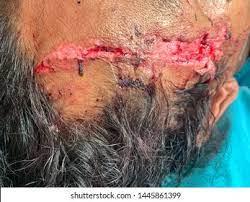
A falling object that cuts or crushes a given part of the body results in a crush/cut type of wound. An example of a cut wound is when a sharp metal cuts off the leg of a person involved in road carnage. A large stone falling on the leg causes a crush. The cuts can be superficial (damage to the epidermis) or internal (damage to the dermis, hypoderm, or internal organs) (Irfan-Maqsood, 2018).
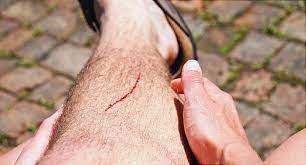
Lacerations are wounds occurring when a given body part tears. An exemplary example of such a wound is that resulting from childbirth. A punch on the eyebrow may also cause a laceration (Irfan-Maqsood, 2018).
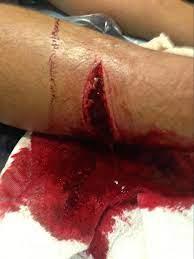
A high-speed object such as a bullet causes a missile or velocity wound when it enters the body. Therefore, ballistic trauma is an example of a missile/velocity wound (Irfan-Maqsood, 2018).
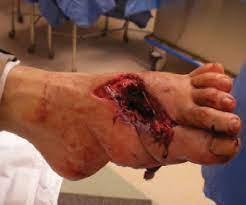
Radiation wounds or ulcers are derivatives of ionization. The ionization can be either acute or chronic. Therefore, when a person eats garlic in long term to develop stomach ulcers because the food is highly acidic, the resulting wound is chronic ulceration. Burns stemming from either fire or lasers cause acute radiation (Irfan-Maqsood, 2018).
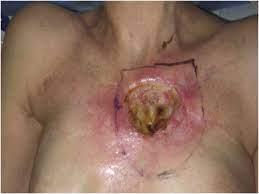
Based on the set precedent, categorizing wounds using their causes is more effective and reliable than evaluating the extent of the contamination. Although the level of contamination is essential in determining the treatment or prescription, the cause help to decipher the best diagnosis and treatment techniques. For example, the cause of the wound determines whether a physician must recommend an x-ray scan.
References
Felson, S. (2021). How does my wound heal, and how do I treat it? [Image]. Web.
Herman, T. F., & Bordoni, B. (2020). Wound classification. National library of medicine. Web.
Irfan-maqsood, M. (2018). Classification of wounds: know before research and clinical practice. Journal of genes and cells, 4, 1. Web.
Jacobson, L. K., Johnson, M. B., Dedhia, R. D., Niknam-Bienia, S., & Wong, A. K. (2017). Impaired wound healing after radiation therapy: A systematic review of pathogenesis and treatment. Jpras Open, 13, 92-105.
James, B., Fallat, L., & Morrison, P. (2014). Treating Gunshot Wounds In The Lower Extremity. Podiatry Today. Web.
Mendenhall, A. (n.d.) Cuts and scrapes: wise advice and urban legends. San Diego Pediatricians | Children’s Primary Care Medical Group. Web.
Newman, R., & Mahdy, H. (2022). Laceration. Statpearls. Web.
Shutterstock. (2022). Closeup avulsion laceration [Image]. Web.